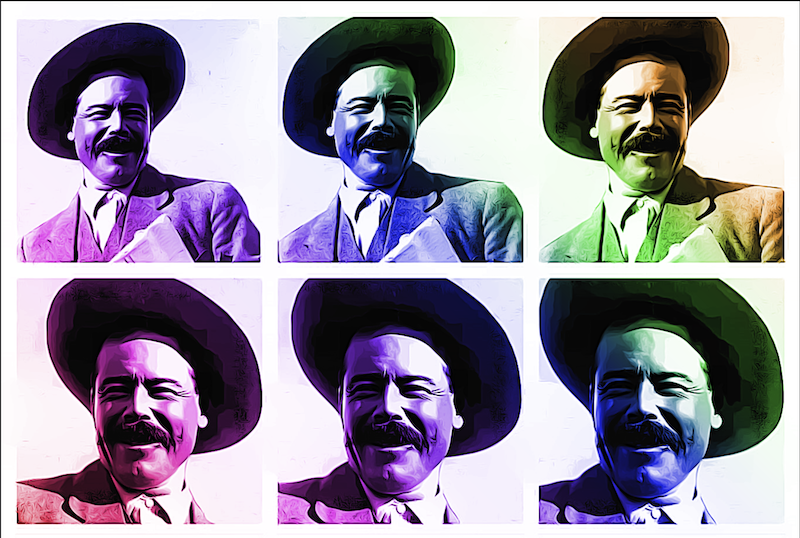Pancho Villa, a key figure in the Mexican Revolution and an icon of popular culture holds a prominent place in the vast landscape of Mexican history. His legacy goes beyond textbooks and academic conferences, as his indelible mark on the history of the Mexican Revolution still captivates the minds of students and history enthusiasts.
Studying historical figures like Pancho Villa can be fascinating and challenging for students. However, it is crucial to approach the subject with an open mind and avoid imposing value judgments. Understanding the past requires exploring multiple sources without trying to fit them into a present-day mold.
What truly brings history to life is finding engaging approaches and practical applications. This is particularly true when delving into the Mexican Revolution and the history of Pancho Villa, a key figure in this armed conflict that unfolded in the early 20th century and lasted a decade.
Gaining a deep understanding of this historical period can provide insights into the current political, social, and cultural issues in Mexico and to serve as a source of inspiration or leadership lessons.
Pancho Villa is undoubtedly a character in Mexican history whose legacy cannot be forgotten. In 2023, the Mexican government commemorates the “Year of Francisco Villa” to remember his assassination on July 20, 1923, rather than his birthday or entry into the Revolution.
The narrative surrounding Pancho Villa swings like a pendulum, with some hailing him as a hero and others condemning him as a ruthless killer. Nevertheless, Villa remains deeply rooted in Mexican history and the chronicles of the Mexican Revolution as an integral part. As a result, both his admirers and detractors are compelled to take a closer look at his complex story.
While everyone knows the name Francisco Villa or Pancho Villa, his actual birth name was Doroteo Arango Arámbula. Under his battle name, his historical role and legend have been etched into the annals of time. This distinction is shared by numerous famous individuals who achieved historical immortality with names different from their birth names. Thus, Pancho Villa was a pseudonym.
Doroteo Arango Arámbula is also known by another nickname: the Centaur of the North. With this revolutionary moniker, he reached a mythical dimension, as a centaur is a creature from Greek mythology with a human’s upper body and a horse’s legs. The comparison is fitting, as Villa was caught between two natures in battle, one human and the other untamed, half man, half horse.

Pancho Villa, an icon of Mexican popular culture and the Mexican Revolution
Pancho Villa, an icon of Mexican popular culture, has left an indelible mark not only on the history of the Mexican Revolution but also in the realm of popular culture. Through various forms of artistic expression, Villa’s multifaceted representation has elevated him to iconic status, capturing the imagination of students and history enthusiasts worldwide.
From the folk songs known as corridos that recount the heroic struggles of the Revolution to literature and the silver screen, Pancho Villa surpasses mere existence. Countless corridos celebrate his bravery, embodying the spirit of the Mexican Revolution and immortalizing his heroic deeds.
The character of Pancho Villa has been immortalized through a wide variety of literary works, both fiction and non-fiction. His story has captivated writers seeking to delve into his enigmatic personality and the complexities of the Revolution in which he played a central role.
Furthermore, the film industry has embraced the story of Pancho Villa, offering the audience a visual feast of his life and adventures through numerous movies and documentaries. These cinematic portrayals entertain and educate viewers, bringing Villa’s revolutionary spirit and the tumultuous era he lived into life.
Beyond literature and film, the image of Pancho Villa has permeated the vibrant world of visual arts. Paintings, murals, and sculptures have served as powerful mediums through which post-revolutionary Mexican muralists have depicted Villa’s essence. These artworks convey symbolic messages, adding to Villa’s mythical stature and embodying the revolutionary fervor that defined his time.
The representation of Pancho Villa in popular culture has played a fundamental role in shaping Mexican identity and national consciousness. His image has become an enduring symbol of Mexican pride, resistance against oppression, and the struggle for social justice. It serves as a reminder of the sacrifices made by countless individuals during a tumultuous chapter in Mexican history.
The enduring fascination with Villa in popular culture is a testament to his profound impact on the history of Mexico. His legendary status continues to resonate in the hearts and minds of people today, inspiring admiration, curiosity, and an ongoing exploration of the Mexican Revolution and the enigmatic figure at its core.
For students and enthusiasts of Mexican history, delving into the rich tapestry of Pancho Villa’s representation in popular songs, literature, films, and visual arts offers a journey into the world of this iconic revolutionary figure.
This allows us to unravel the cultural significance and enduring influence of Pancho Villa, not only as a historical figure but also as a symbol of resilience, courage, and the unwavering pursuit of justice that still resonates today.
© 2023 - 2024, Eduardo Barraza. All rights reserved.




